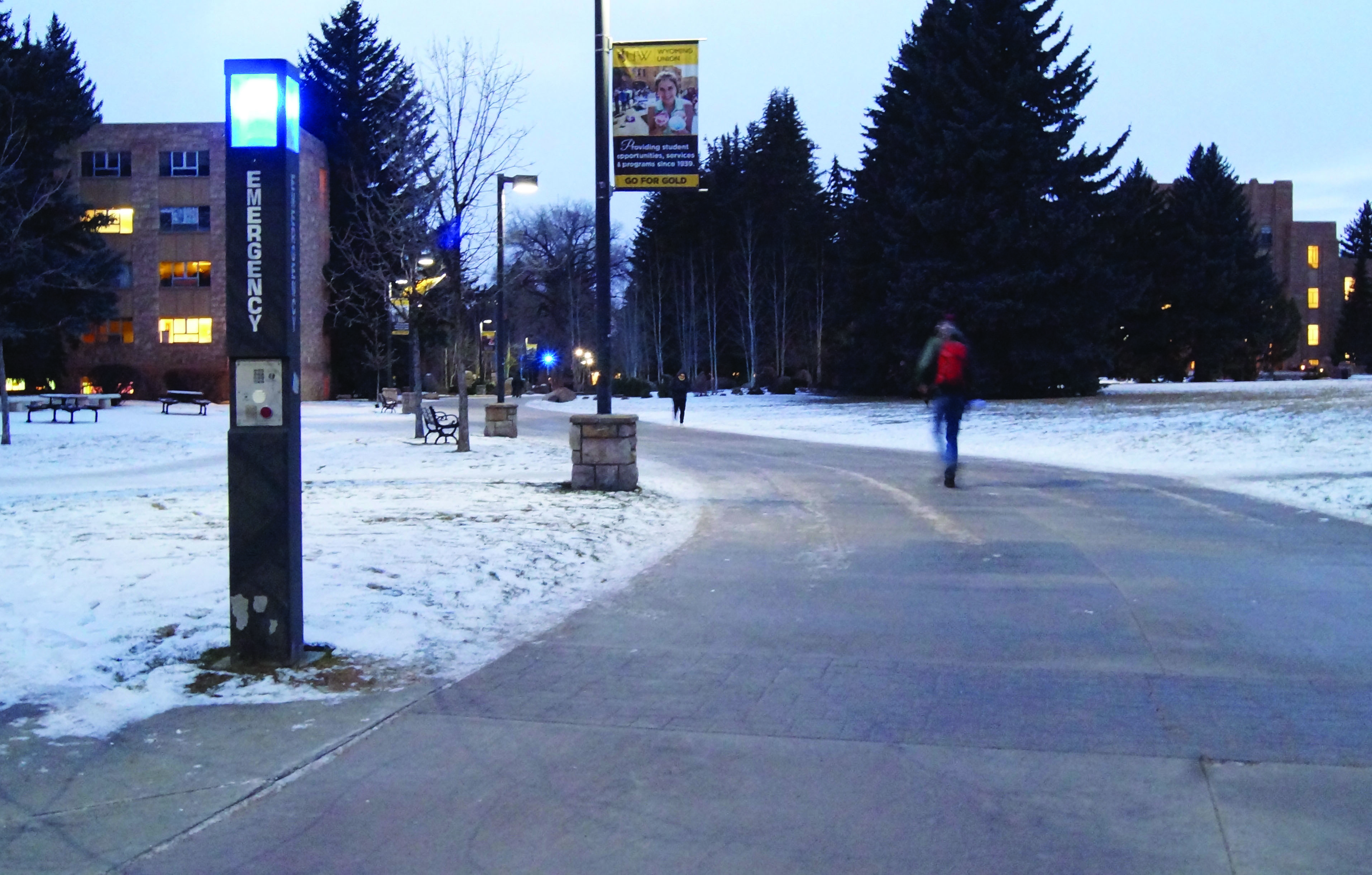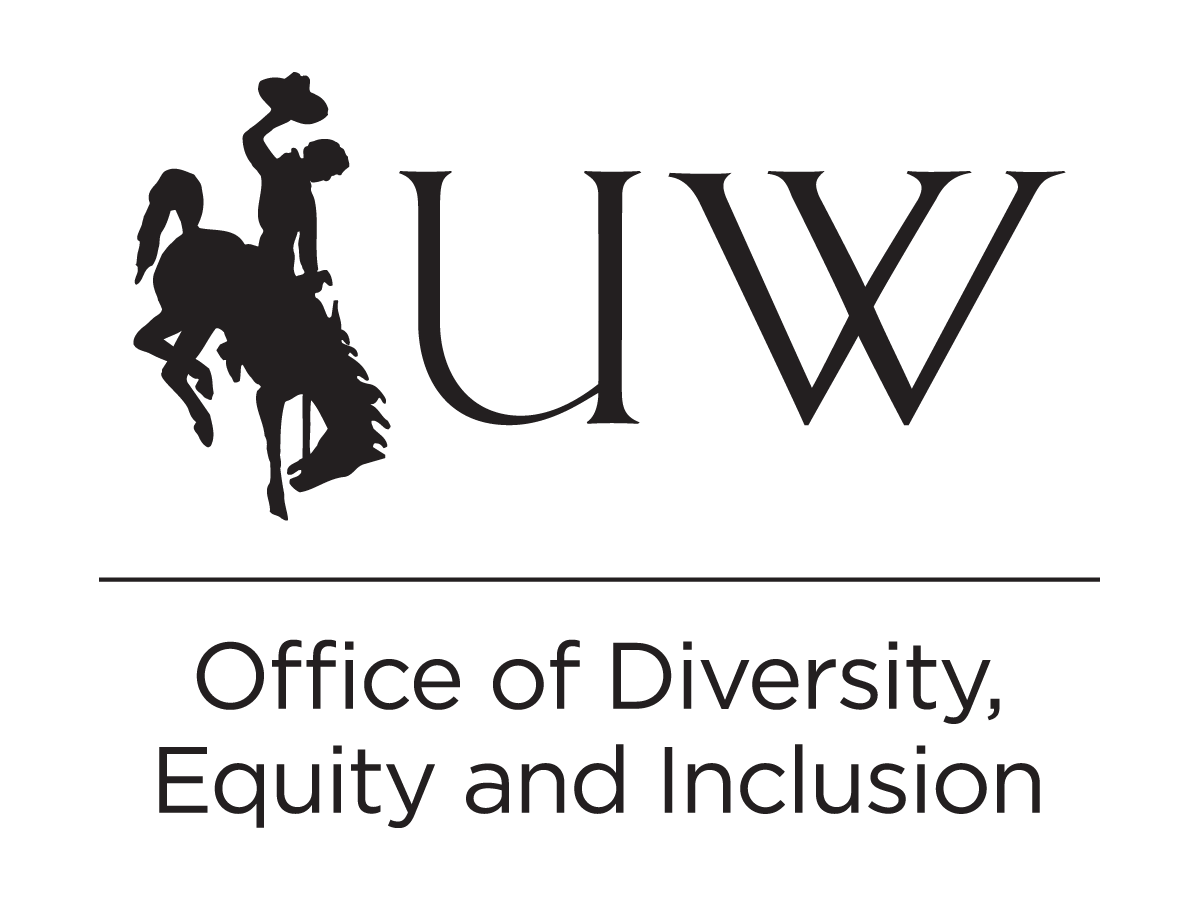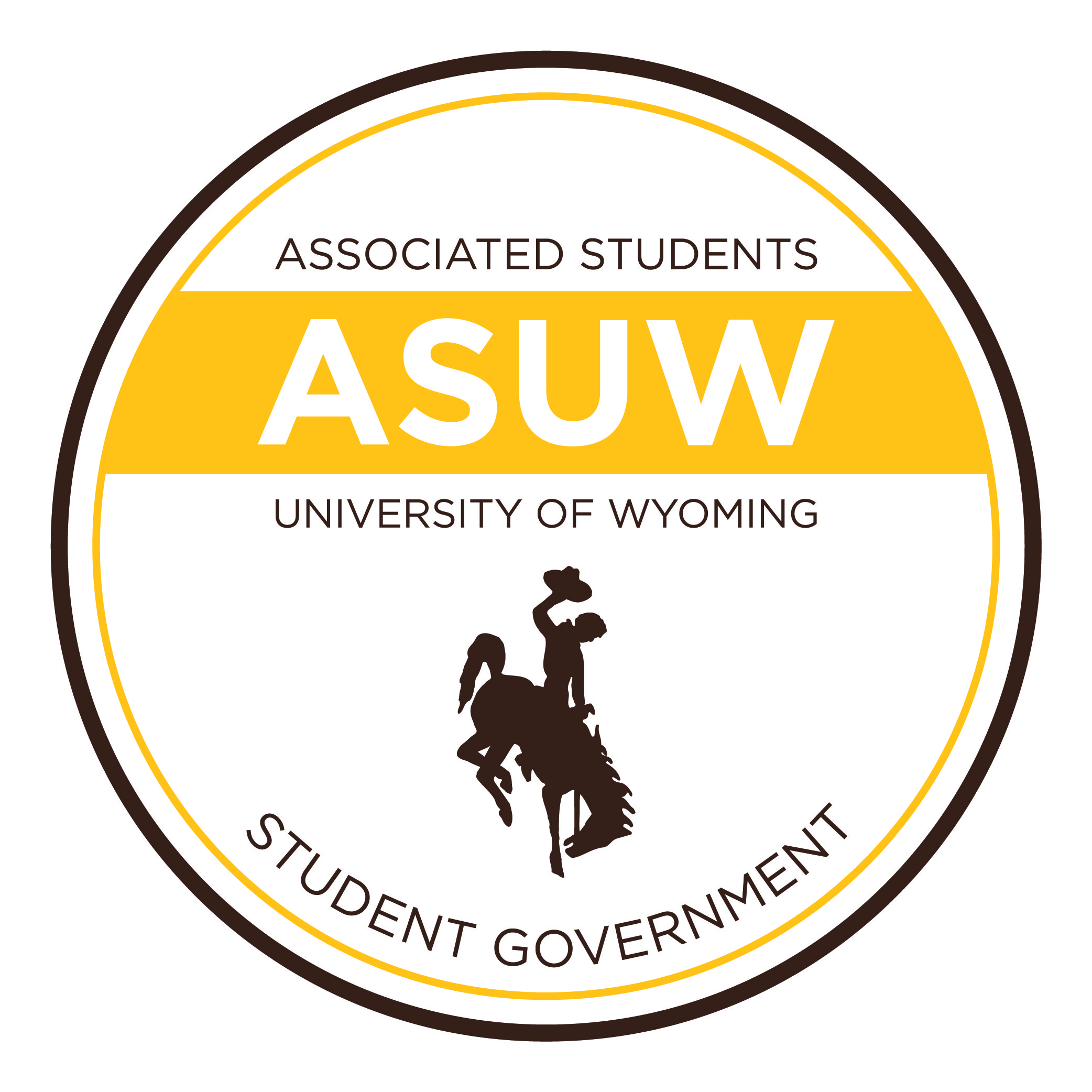The sun will set before 5 p.m. for the next few months, meaning that students will rely on the lighting around campus to guide them in the dark.
“I don’t usually walk around at night, but in the past when I had to I felt relatively safe,” art major Catherine Swaim said. “Like [the campus does] have lighting that’s enough, but I wish there was more, because as a woman I kind of do feel a little bit threatened walking around in the dark.”
Angela Hendrix, senior cultural anthropology and religious studies major, said, “Based off of zero lighting at night, the campus security is a joke.”
According to President Nichols, ASUW is in the process of appointing a committee to review and improve services related to campus security at night, particularly lighting and pedestrian safety.
“So where we started was a conversation right here in the office,” ASUW President Ben Wetzel said. “Wendy [Hungerford] was part of it and Julia Dickey from Real Women, Real Bodies. We were all batting ideas around.”
The After-Hours Pedestrian Safety Ad-Hoc Committee plans to investigate the construction of “safe corridors” on campus in addition to added lights in darkened areas such as parking lots.
“Campus lighting is kind of an issue all itself, so that’s going to take some time, Wetzel said. “That’s obviously, capital construction of buying units, installing units’ electrical wiring, so it’s something that I think is noted and has been talked about for a long time and it’s something that we are going to continue to work on.”
Safe corridors are designated safety paths that will cut through the middle of campus. Corridors will feature extra lighting, reduced shrubbery to remove obstacles that a person could hide behind and CCTV video cameras that are wired directly to UWPD so dispatch can send responders in the event of a serious situation.
“One that comes to my mind is starting at Classroom building, walking kind of through the middle there below Arts and Sciences, kind of in front of the Cheney Center to the Union, in front of the library, out to the parking lot,” Wetzel said. “So your main thoroughfare of campus between some of your transportation access, the bus routes and parking lots [is covered].”
The idea behind these paths is that students will be able to walk freely at night without fear of potential danger.
“That is known as this route, that if you need to cross campus as night, that is where you go because you’re going to be not only more comfortable because of the reduced areas of potential danger and the increased light, you are actually going to be monitored at the time,” said Wetzel.
More lighting on campus would allow students to feel safer when walking late at night.
“I know that most assaults happen from people that you know, but that doesn’t [stop] somebody who you don’t know from just attacking you,” Swaim said.
ASUW hopes to see a report from the Ad-Hoc Committee in March, which will further detail the fiscal costs of lighting, safe corridors and other safety services that are being investigated and potentially begin the implementation of a four-year timeline to execute the new programs.
“If students feel like [lighting] are areas that they need work on, number one either contact your representative on ASUW or contact a university administrator, or send in a cover letter to apply to be on the committee,” Wetzel said. “Even if they don’t apply to be on the committee, come to one of the committee meetings and tell them what you want to see.”
Applications for Ad-Hoc committee seats are available on the ASUW website.



